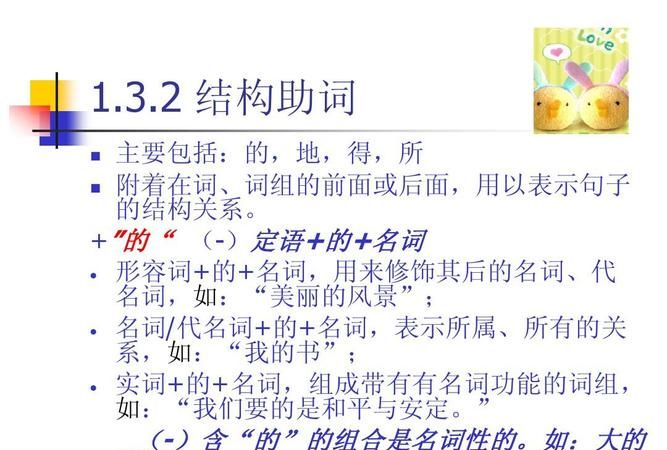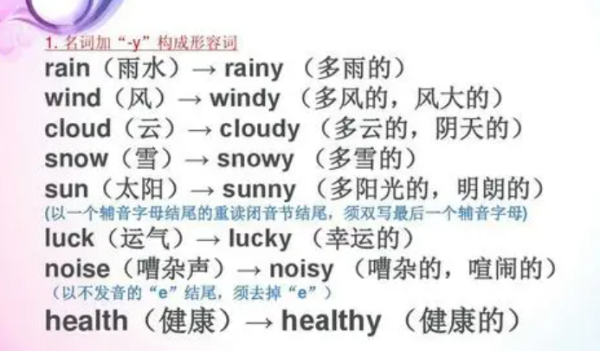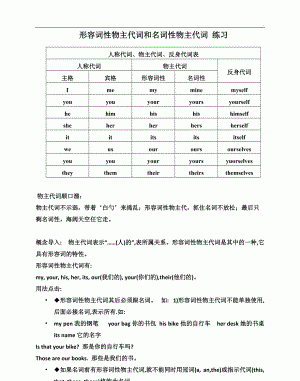本文目录
英语中什么时候用名词修饰名词
women teacher(女教师)
chocolate icecream(巧克力冰淇淋)
basketball player(篮球队员)
当然是在一个词语不能充分表达精确意思,需要再有一个或是更多名词来限定它的范围的时候,名词才可以修饰名词呀.
作定语的名词往往是说明其中名词的材料、用途、时间、地点、内容、类别等.
⒈材料
a diamond necklace
a bamboo pole
paper money
a stone bridge
⒉用途
a meeting room
the telephone poles
the railway staion
trade union
water pipe
welcome speech
eye drops
⒊时间
a day bed
the dinner party
the Apring and Autum Period
evening suit
midday lunch
⒋地点
London hotels
Beijing University
body temperature
the spaceship floor
the kitchen window
⒌内容
a story book
piano lessons
the sports meet
oxygen supply
the air pressure
the grammar rules
⒍类别
children education
enemy soldiers
a bus driver

什么时候用名词修饰名词 什么时候用of
名词修饰名词一般用单数,但也有以下例外。
1)
用复数作定语。
如:sports
meeting
运动会
students
reading-room
学生阅览室
talks
table
谈判桌
the
foreign
languages
department
外语系
2)
man,
woman,
gentleman等作定语时,其单复数以所修饰的名词的单复数而定。
如:men
workers
women
teachers
gentlemen
officials
3)
有些原有s结尾的名词,作定语时,s保留。
如:goods
train
(货车)
arms
produce
武器生产
customs
papers
海关文件
clothes
brush衣刷
4)
数词+名词作定语时,这个名词一般保留单数形式。
如:two-dozen
eggs
两打/(二十四个鸡蛋)
a
ten-mile
walk
十里路
two-hundred
trees
两百棵树
a
five-year
plan.
一个五年计划
个别的有用复数作定语的,如:
a
seven-years
child

名词修饰名词用英语怎么说
当前面的名词表示特指某个人或者某些人的时候,用所有格形式
当前面的名词直接用来修饰后面的名词的时候,不用所有格用原型。
my teachers hair,这个是特指,“我的”老师的头发,就是说那个老师是特定的,所以要用所有格形式,但如果说,note book,就是笔记本,这个本子就是用来记笔记的,所以note就用原型。

名词修饰名词一般用单数,但也有以下例外。
用复数作定语。
如:sports meeting 运动会。
students reading-room 学生阅览室。
talks table 谈判桌。
the foreign languages department 外语系。
man woman gentleman等作定语时,其单复数以所修饰的名词的单复数而定。
如:men workers women teachers。
有些原有s结尾的名词,作定语时,s保留。
什么时候用名词修饰名词 什么时候用of
名词修饰名词 就是 给后面的名词给一个界限
比如 英语老师就是 english teather
那么这时候就是 名词修饰名词
前面的名词如果是动词转换的 那就是动名词
比如 reading class

以上就是关于什么时候用名词修饰名词 ,英语中什么时候用名词修饰名词的全部内容,以及什么时候用名词修饰名词 的相关内容,希望能够帮到您。
